
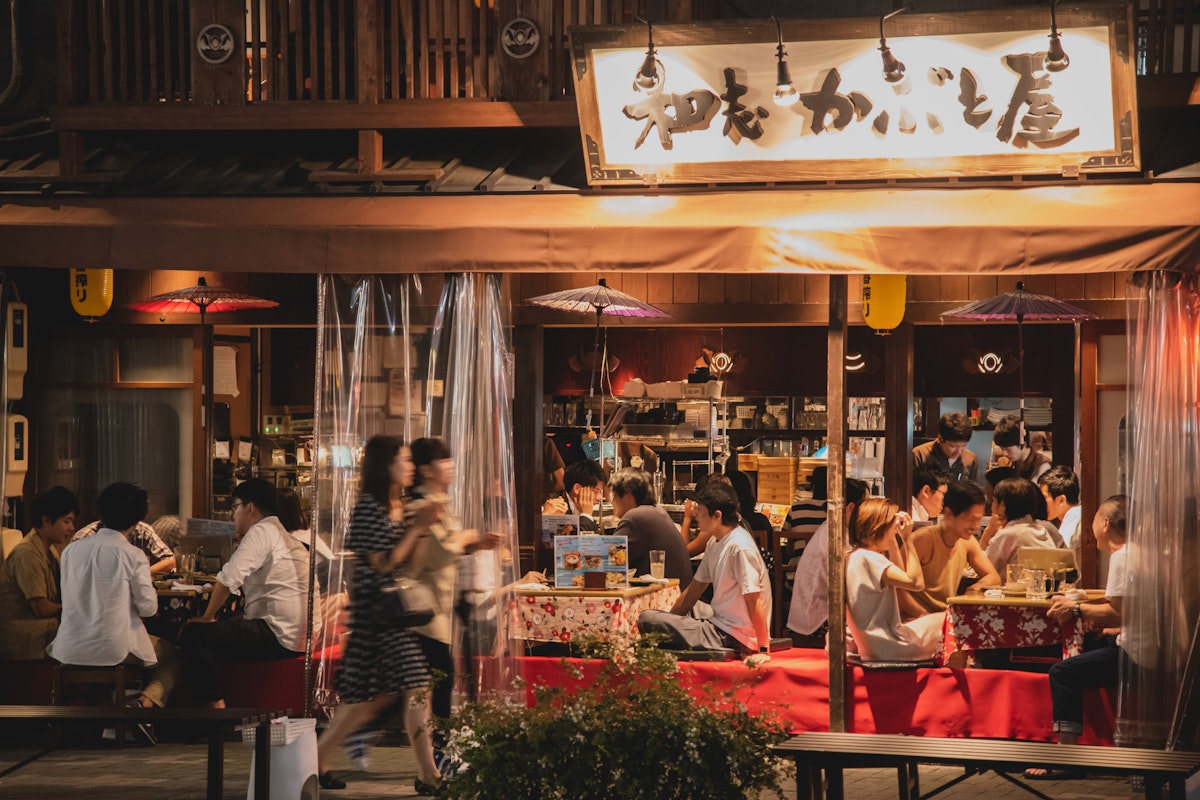
Welcome to this comprehensive Nagoya food guide. Nagoya, the capital of Aichi Prefecture, is often overshadowed by Tokyo and Osaka regarding gastronomy.
However, the city offers many unique dishes that are rich in flavor and steeped in tradition. From udon noodles simmered in hot broth to miso katsu, Nagoya's local cuisine promises an unforgettable culinary journey.
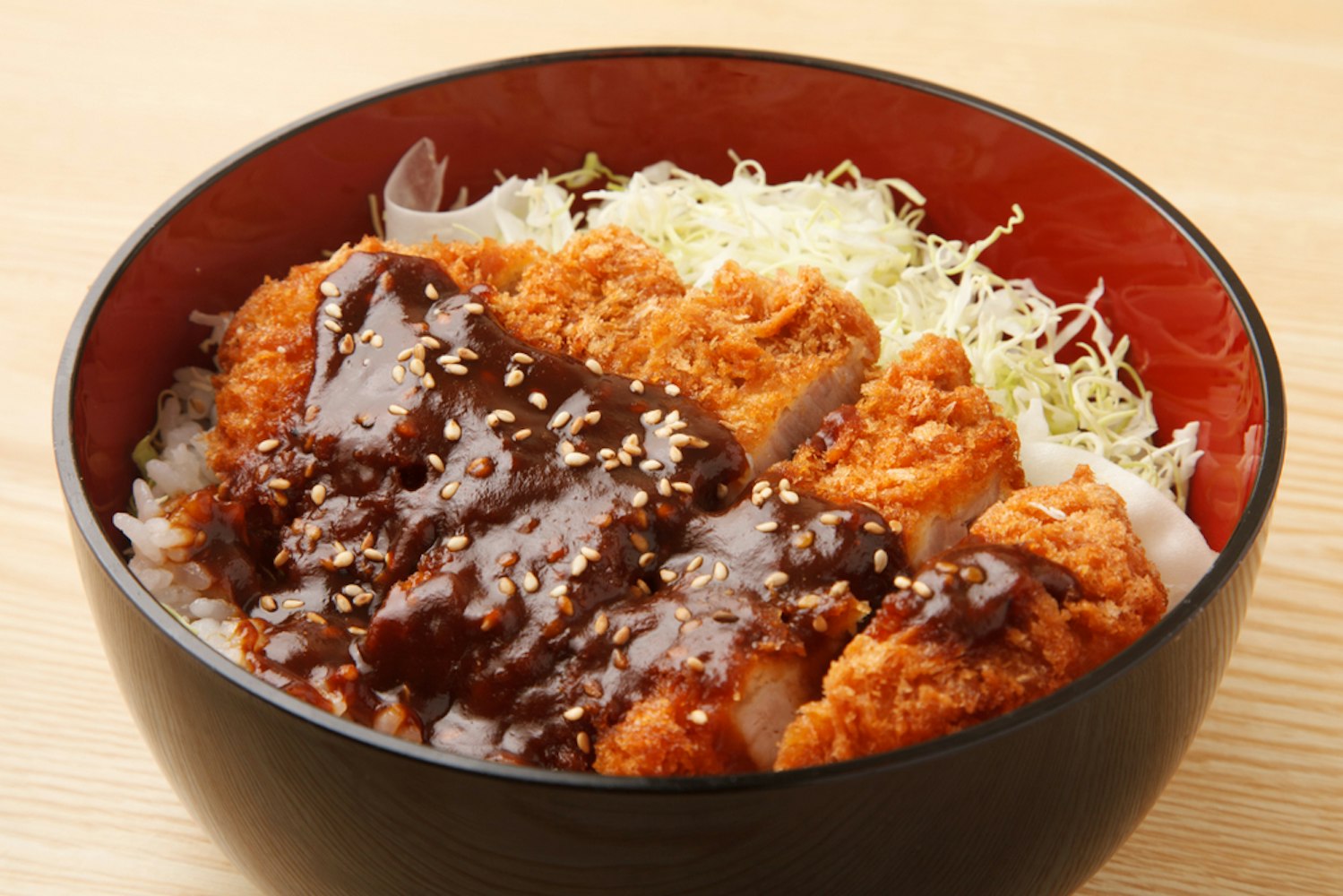
A specialty from Nagoya, miso katsu comprises a rich and thick hatcho miso sauce poured over a crisp, golden, breaded pork cutlet served with sticky Japanese rice. This delectable and comforting dish is ideal for a delightful evening feast with your beloved family and friends.
You can find this dish at most local restaurants and even fast-food chains like Yabaton, which has been serving miso katsu since 1947.
In Miso Katsu, the miso sauce is the star of the show. In contrast to the typical Tonkatsu sauce, which combines soy sauce, Worcestershire sauce, and ketchup, the miso sauce utilized in Miso Katsu is a decadent creation crafted from red miso paste, soy sauce, mirin, and sugar.
The sauce is simmered to perfection, achieving a balanced flavor profile that complements the deep-fried pork cutlet exceptionally well.
Price: around 1700 yen (17 US dollars)
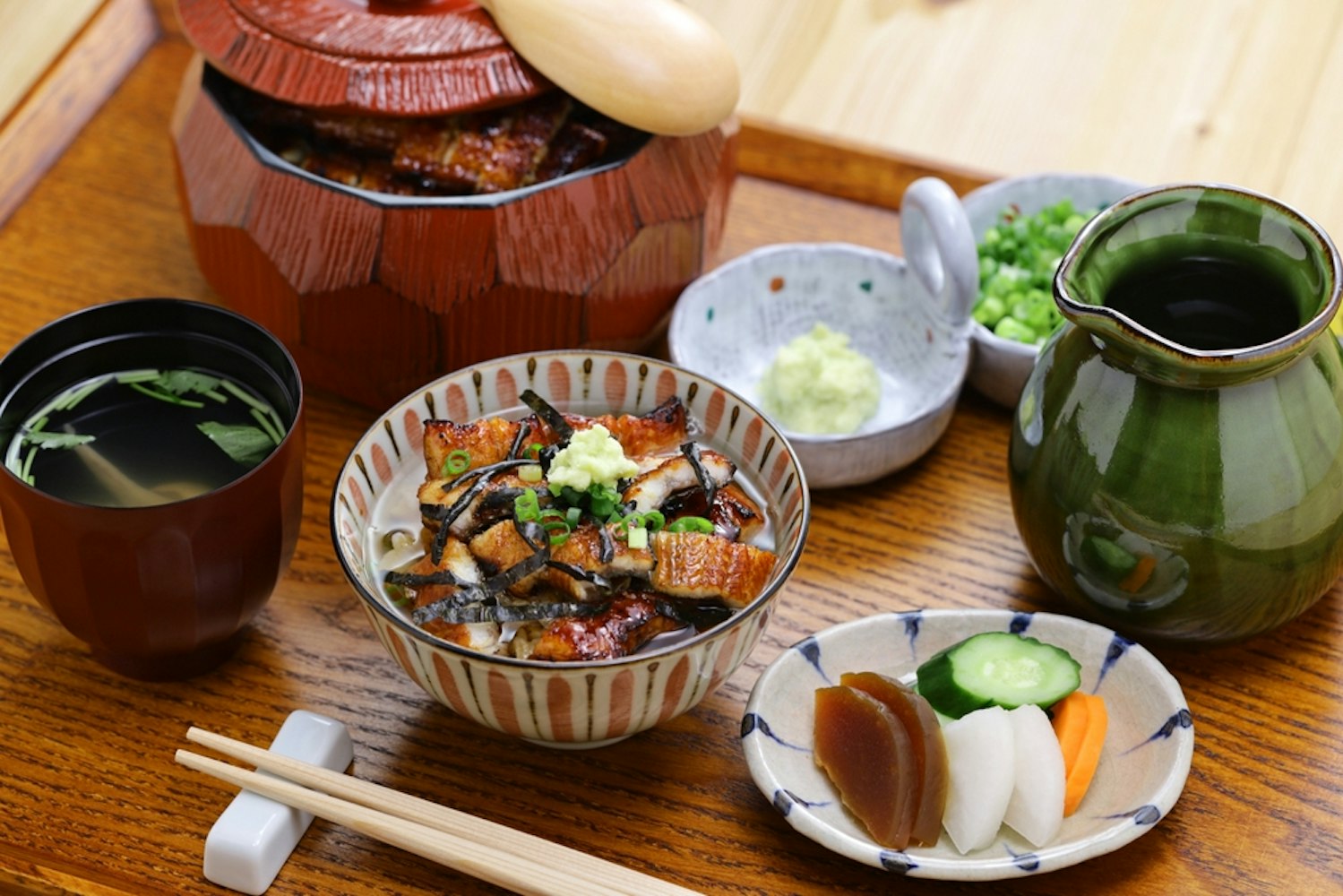
This is Nagoya's take on grilled eel or Unagi. Hitsumabushi is traditionally presented in a wooden bowl alongside a bed of rice and is savored in three distinct stages, each delivering a truly distinctive and delightful culinary journey.
The grilled eel is seasoned with a sweet soy sauce and perfectly complements the rice. Nagoya is teeming with restaurants that specialize in Hitsumabushi.
One popular spot near Nagoya Station offers locals and tourists easy access to this delicacy. Prices can range from mid to high, reflecting the quality of the eel and the skill involved in its preparation.
One of the most fascinating aspects of enjoying Hitsumabushi is the three-stage process of eating it.
1. First Stage: Initially, you eat it as is, savoring the natural flavors of the grilled eel and the sweet soy sauce glaze.
2. Second Stage: Next, add condiments like wasabi, green onions, or seaweed, mixing them with the eel and rice.
3. Third Stage: Finally, you pour a flavorful broth over the remaining third, turning it into a kind of eel and rice soup.
Each stage offers a different texture and combination of flavors, making it a multi-faceted culinary experience.
Price: Around 2700 yen (27 US dollars)
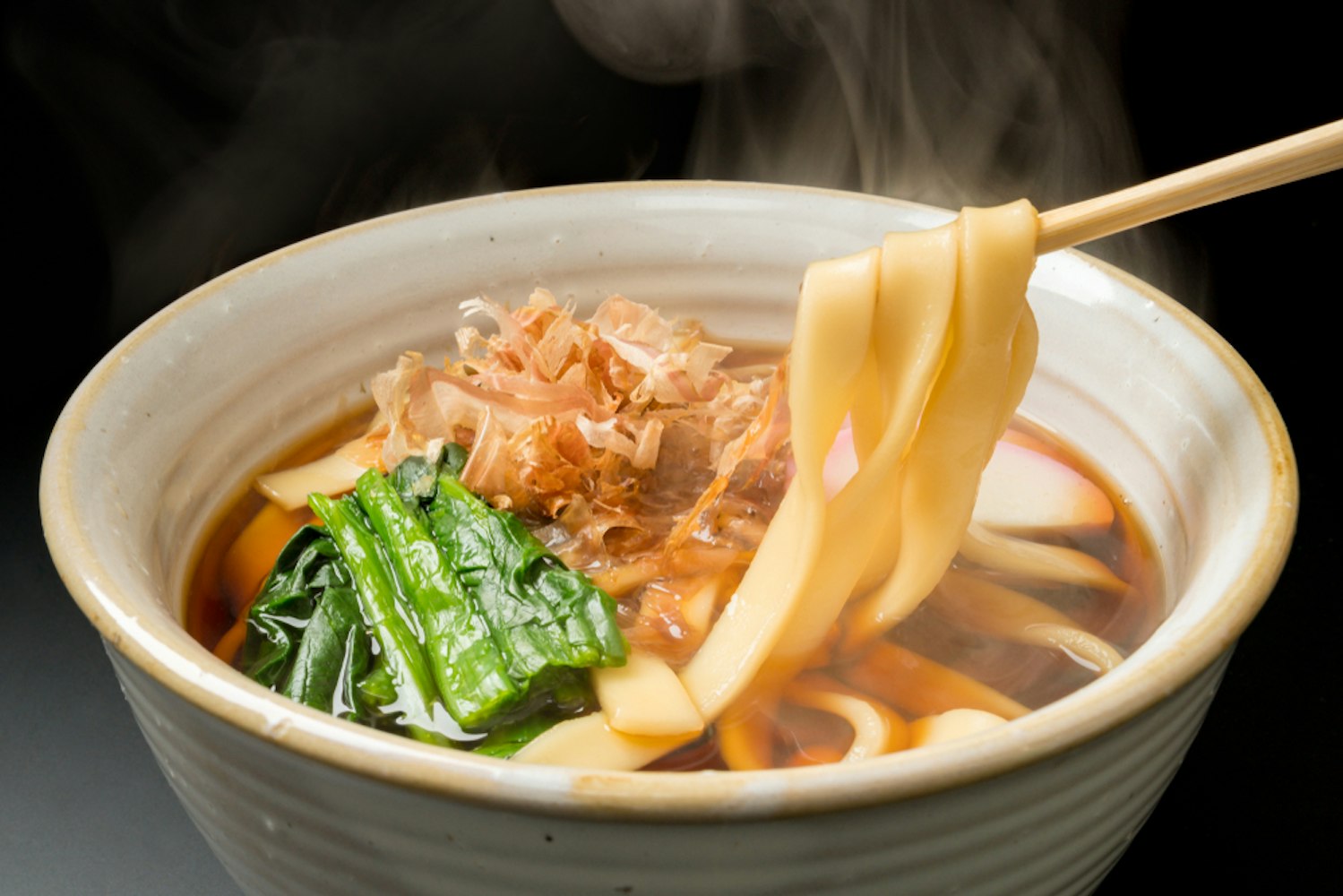
Kishimen refers to flat noodles that are similar to udon but have a flat shape. Typically enjoyed with soy sauce and green onions, Kishimen offers a chewy texture different from the regular udon noodles.
Kishimen is readily available in many restaurants around Nagoya. You can also find specialty kiosks near Nagoya Station serving this local delicacy.
Whether in a formal dining setting or grabbing a quick meal on the go, Kishimen is an accessible dish for all.
Kishimen can be served in various ways, but soy sauce and green onions are the most popular. They are sometimes served in a hot broth, similar to traditional udon dishes.
Other variations include stir-frying the flat noodles with a mixture of vegetables and meats, such as shrimp tempura or deep-fried tofu.
Price: around 1000 yen (10 US dollars)
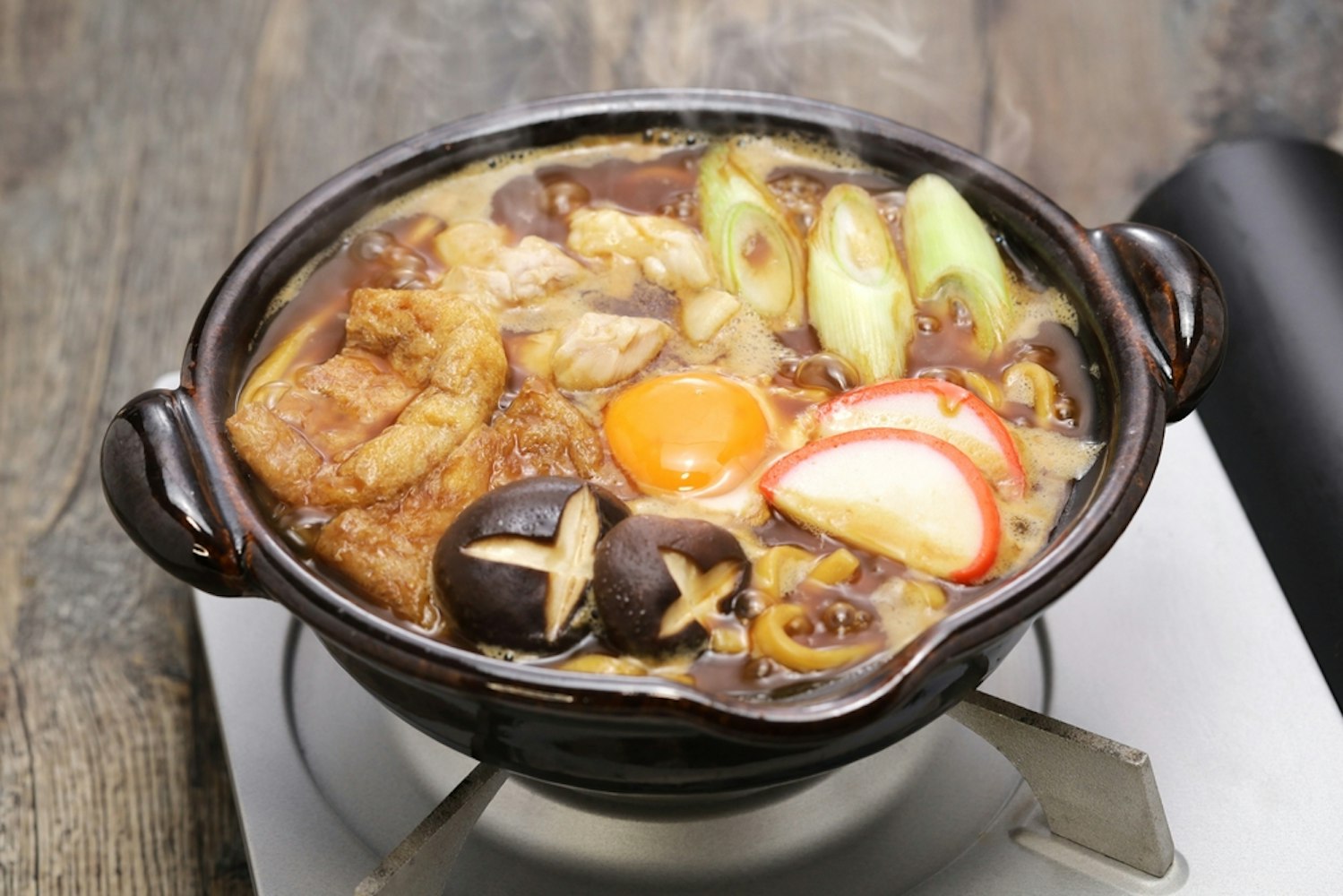
Miso Nikomi Udon is a hot pot dish featuring udon noodles simmered in a miso soup-based hot broth. It is Nagoya's comfort food at its best, often including ingredients like boiled spinach and green onion.
The best places to savor Miso Nikomi Udon are traditional Japanese restaurants and udon noodle shops around Nagoya Station and downtown. These establishments often offer various options, allowing you to customize your bowl with different toppings and sides.
This dish is best enjoyed hot, straight from the ceramic pot in which it is served. The steamy, aromatic broth is the first thing you'll notice, inviting you to take a sip before digging into the chewy udon noodles and other ingredients.
It's a dish that warms your body and soul, making it a favorite comfort food in Nagoya.
Price: about 1300 yen (13 US dollars)
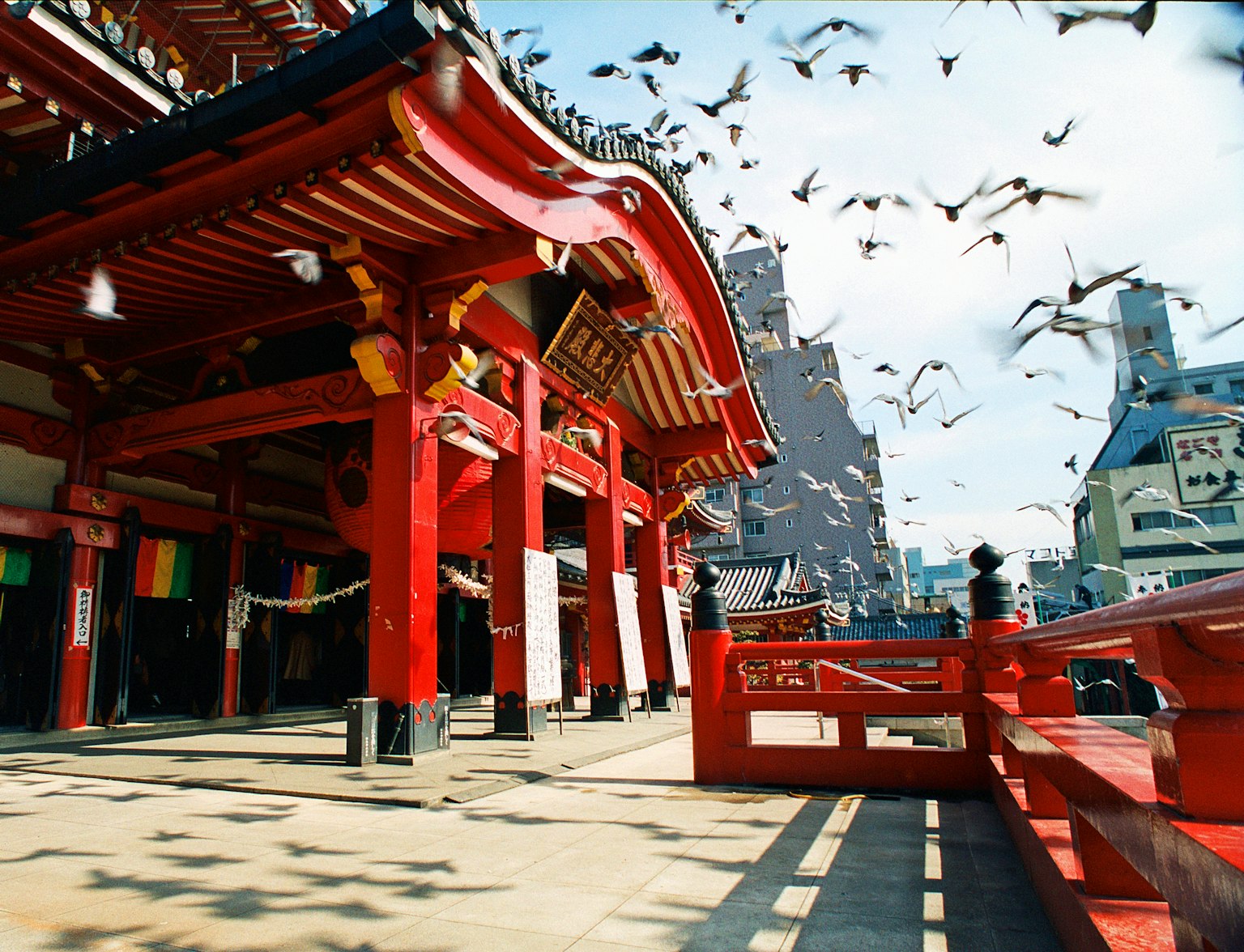
Have a bowl of miso nikomi udon after a day tour in Nagoya.
These are two variations of beef tendon dishes cooked in miso sauce. Doteni is simmered until tender, while Doteyaki is grilled and then steamed.
Both dishes offer a robust flavor profile enriched by the miso sauce. If you want to try these dishes, head to local izakayas or specialized tendon restaurants around Nagoya Station.
Many places serve Doteni and Doteyaki as part of a more extensive menu, allowing you to sample other Nagoya specialties.
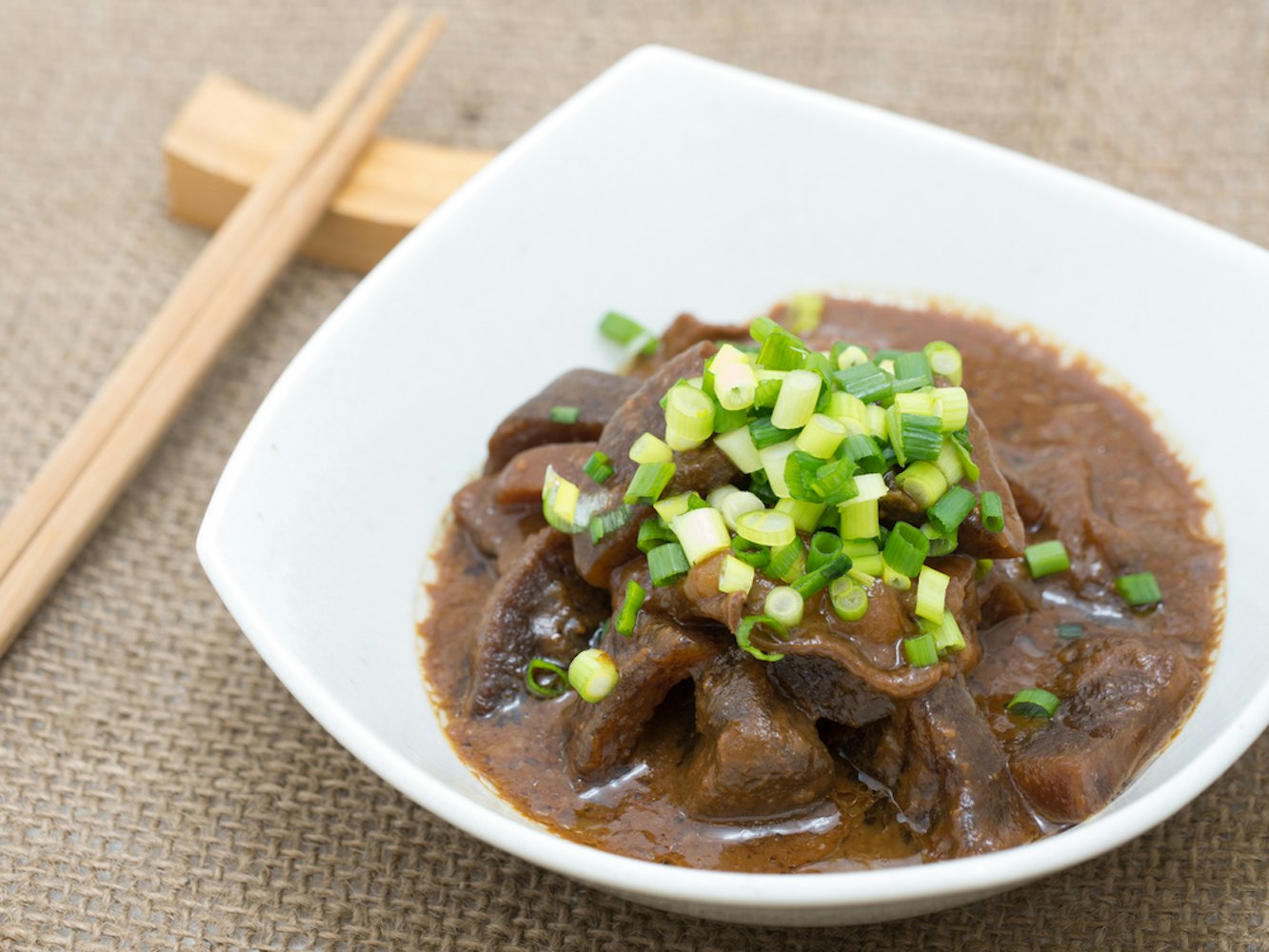
Doteni is a hearty dish where beef tendons are slow-cooked in a pot until they become tender. For added depth, the beef tendon is stewed in a hot broth made from miso sauce, soy sauce, and sometimes sake or mirin.
Doteni, a delightful dish, boasts a harmonious blend of flavors and a luscious, gelatinous texture that exquisitely complements a steaming bowl of rice. This Nagoya specialty highlights the splendor of the renowned red miso sauce, known for its intricate sweetness and profound umami taste.
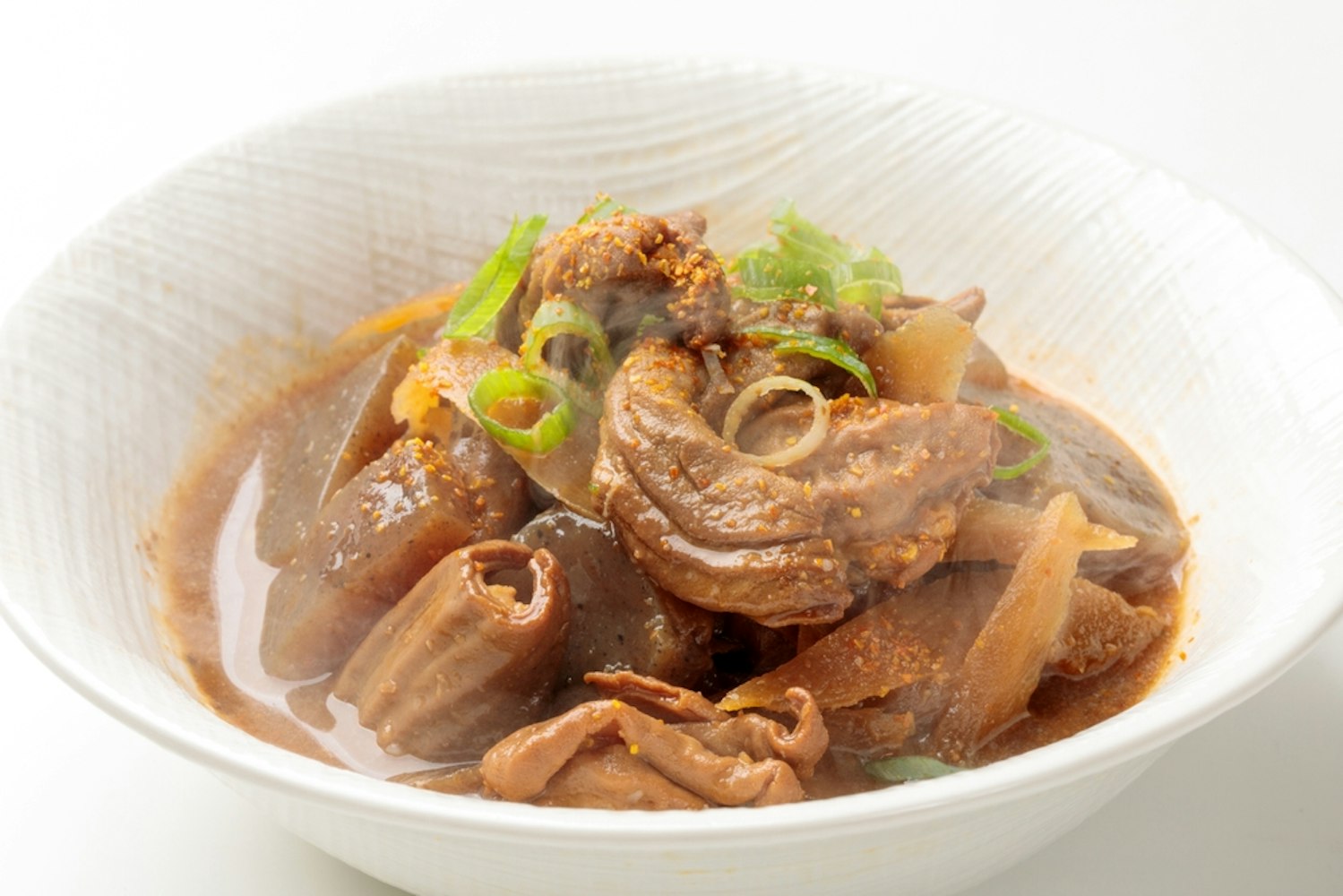
Doteyaki takes a slightly different approach to cooking beef tendons. The tendons are grilled in this dish to bring out their natural flavors and then simmered in miso sauce.
The grilling step adds a smoky dimension to the dish, complementing the richness of the miso sauce. Some versions also include vegetables like daikon radish or green onions to balance the robust flavors.
Price: about 1300 yen (13 US dollars)
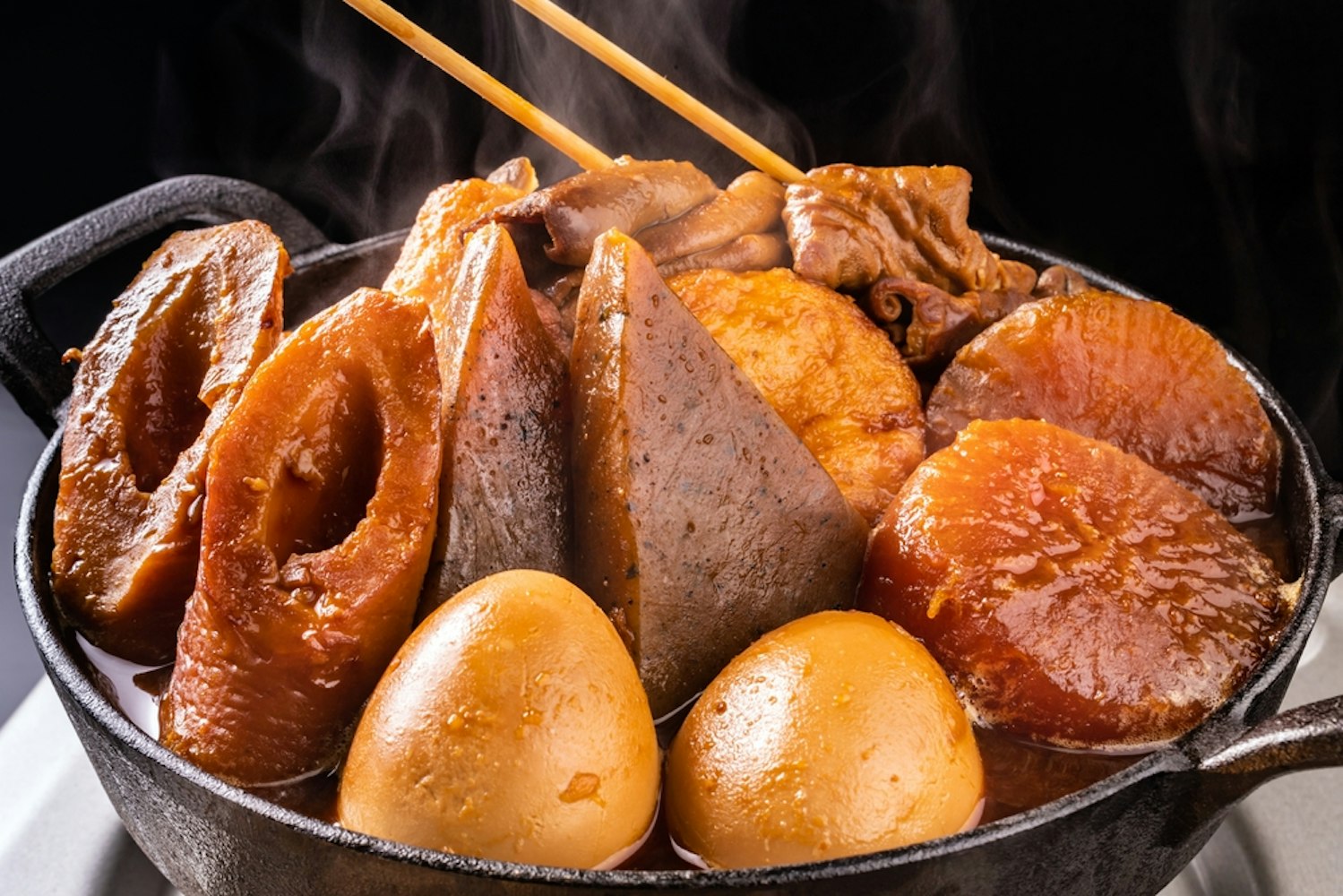
A winter favorite, Miso Oden consists of various ingredients like boiled eggs, radish, and tofu simmered in a miso soup-based broth. It's a comforting dish that warms you from the inside out.
Miso Oden is widely available in Nagoya, especially during the winter months. You can find this dish easily from street vendors to specialized oden shops and izakayas.
Many places near Nagoya Station serve this comforting meal, making it easily accessible for tourists and locals.
Miso Oden is generally served hot, making it an ideal comfort food during the cold months. It is often enjoyed as a standalone dish but can also be a side dish accompanying a bowl of rice or a plate of noodles. Green onions are sometimes sprinkled on top for an added layer of flavor.
Price: around 500 yen (5 US dollars) for a bowl of Miso Oden.
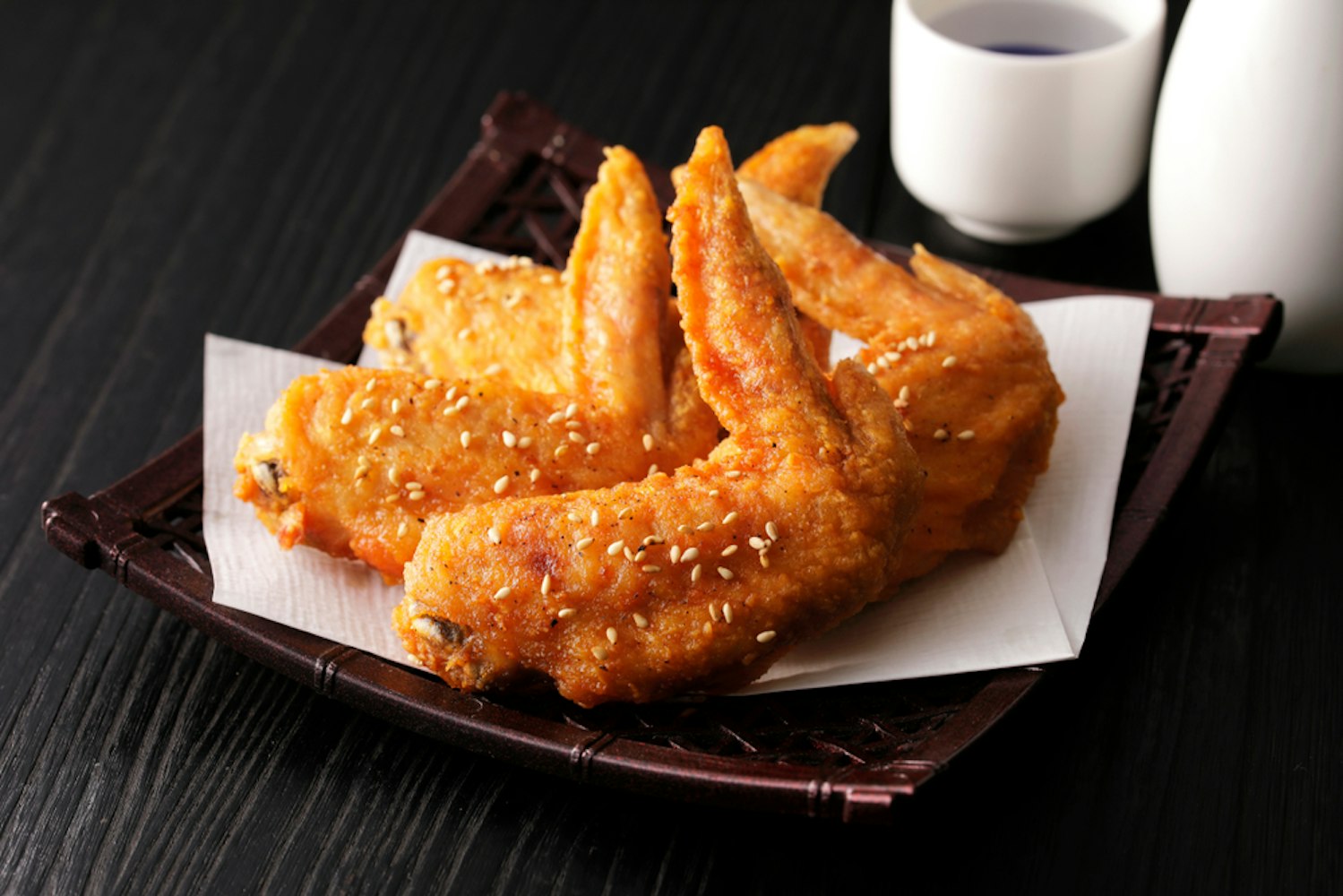
For fans of chicken wings, Tebasaki is Nagoya's specialty. Deep-fried chicken wings are coated in a sweet and spicy sauce, often enjoyed with a pint of beer.
You'll find numerous izakayas and specialized Tebasaki restaurants throughout the city, especially near Nagoya Station. These establishments often offer Tebasaki as part of a set meal, accompanied by rice, miso soup, and pickled vegetables.
Proper etiquette is essential when enjoying Tebasaki. Traditionally, you hold the wing by one end and eat around the bone, discarding the cartilage and bone on a separate plate.
Dipping these wings in additional sauce or using utensils is considered impolite.
Price: about 500 yen (5 US dollars)
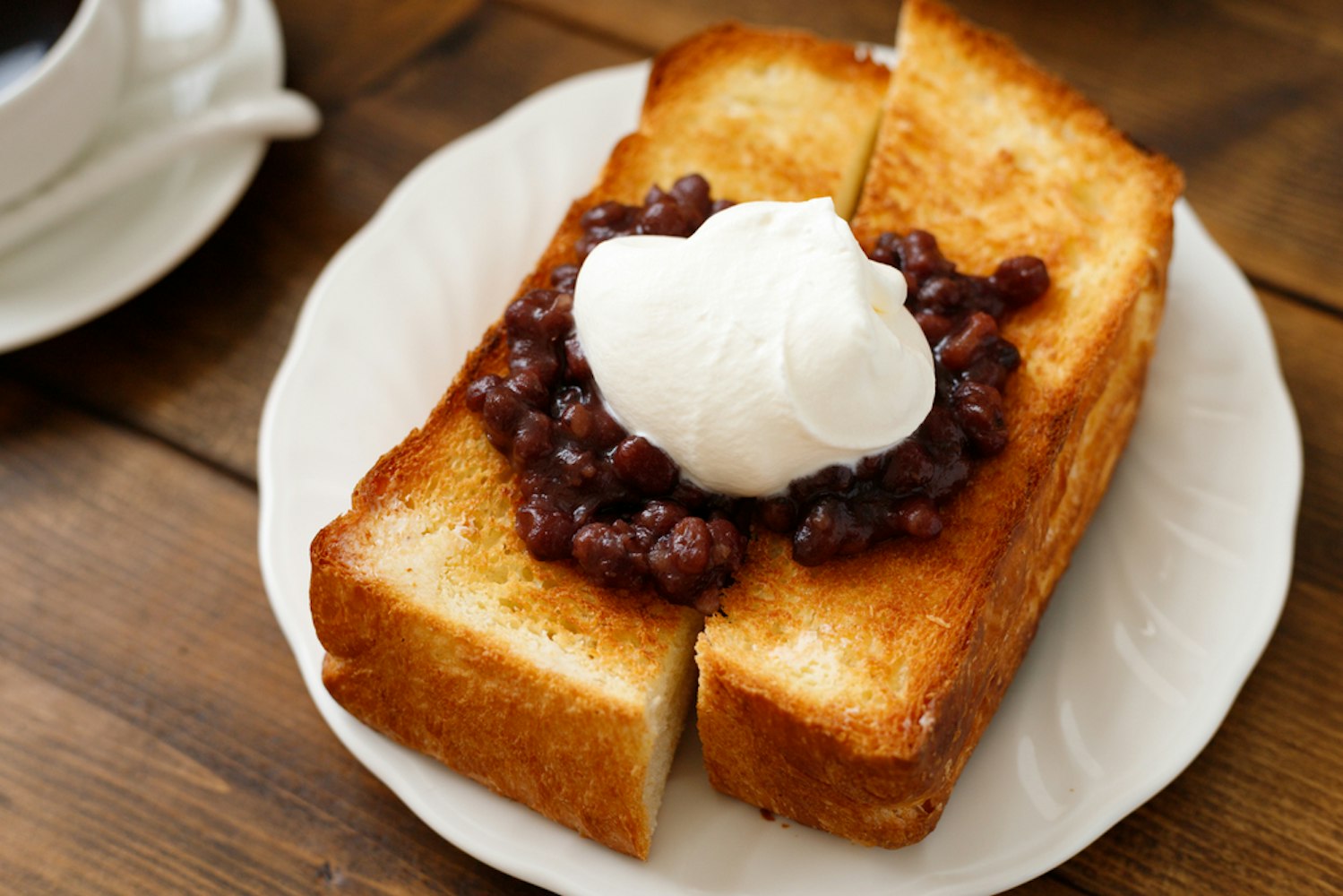
A Nagoya specialty dish with warm toasted bread topped with red bean paste, butter, and fresh whipped cream. Breakfast with a Japanese theme that you absolutely must try!
White Bread: Thick slices of white bread form the base of Ogura Toast. The bread is toasted to a golden brown, offering a delightful crunch.
Butter: A layer of butter adds richness and moisture, complementing the sweet red bean paste.
Ogura-an: This sweet red bean paste is the star of the dish, offering a sweetness that balances out the saltiness of the butter.
Ogura Toast is typically enjoyed as part of the "Morning Set," especially in cafes around Nagoya Station. The Morning Set usually comes with a hot beverage like coffee or tea, making it a complete and balanced breakfast.
The toast pairs exceptionally well with a cup of black coffee, as the bitterness complements the sweetness of the red bean paste.
Price: around 500 yen (5 US dollars)
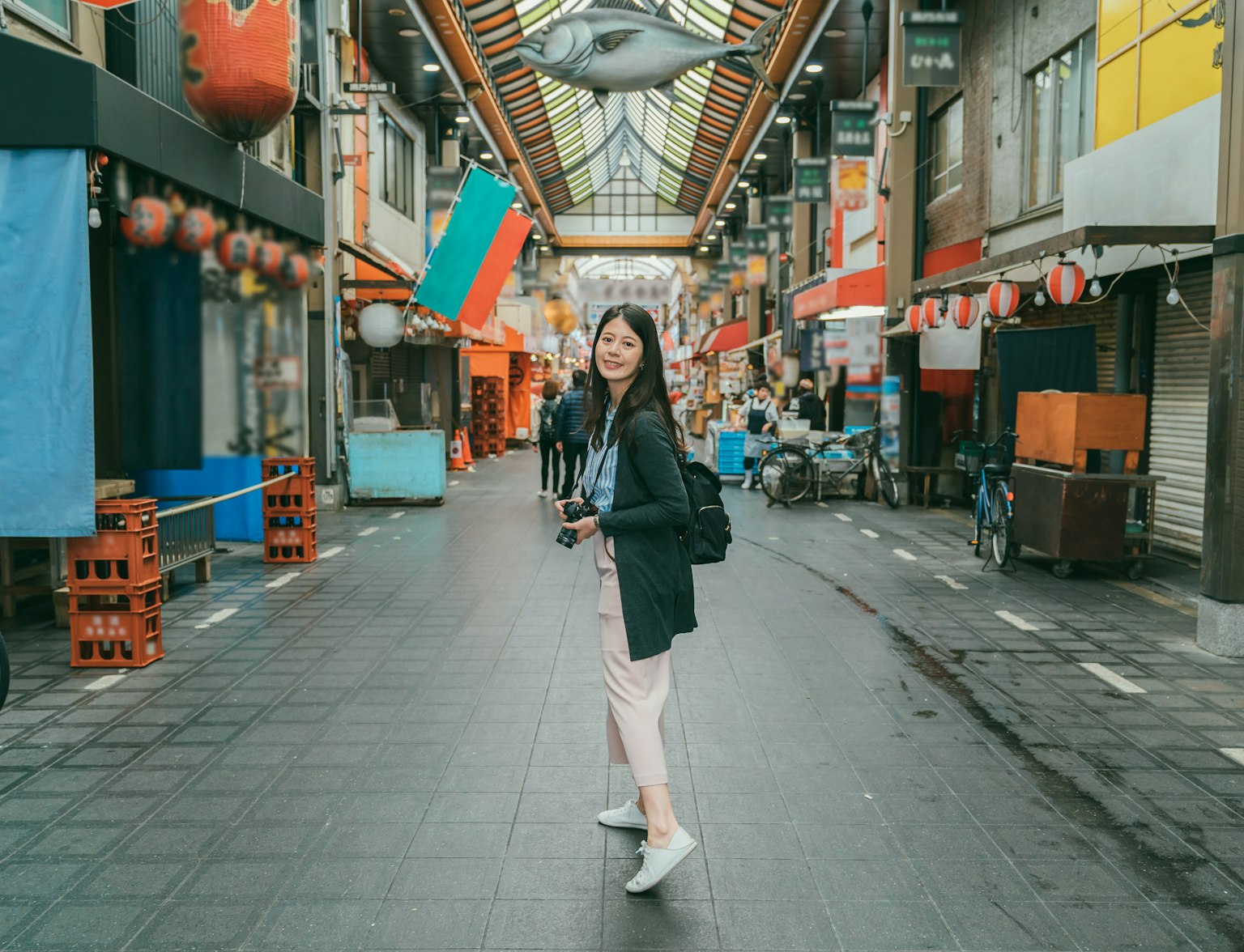
Embark on a journey exploring Nagoya's culture and cuisine.
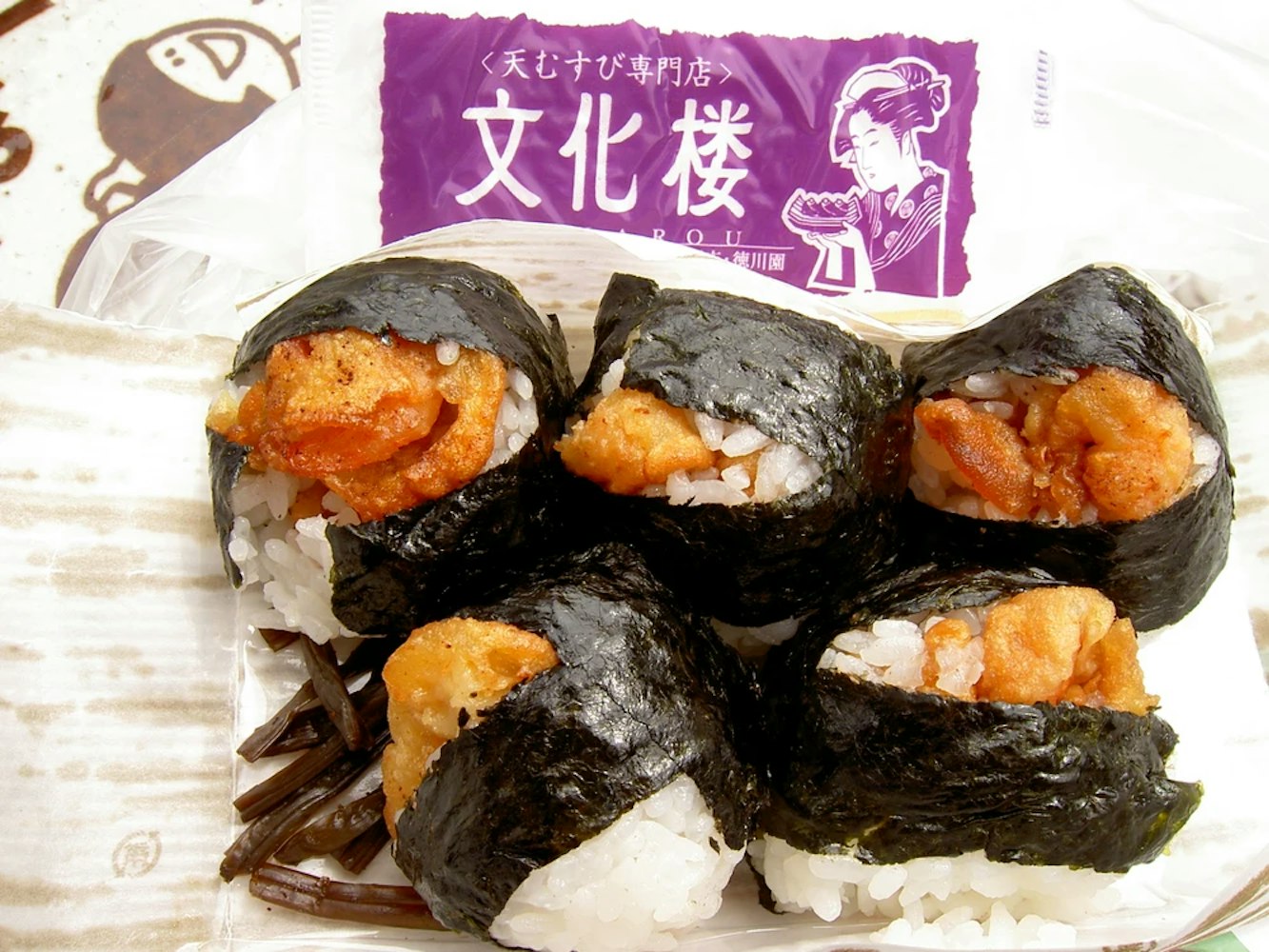
A fusion of tempura and onigiri, Ten-musu features deep-fried shrimp tempura enclosed in a rice ball and wrapped with seaweed. You can find Ten-musu in many local eateries around Nagoya.
It is trendy in casual dining spots and takeaway counters near Nagoya Station. Whether on a lunch break or looking for a quick, satisfying meal, Ten-musu is a convenient and delicious option.
Tempura: Any tempura can be used in Ten-musu, but the most common is shrimp. The crispy texture and savory flavor of tempura add a nice contrast to the rice.
Onigiri Rice: Traditional Japanese white rice is used as the base for Ten-musu. It is essential to use sticky rice to hold its shape when forming into a ball.
Seaweed: Roasted or seasoned seaweed sheets wrap the rice and tempura, adding a subtle umami flavor and texture.
Soy Sauce: A small packet of soy sauce is often included with Ten-musu for dipping. Some variations may consist of a soy sauce-based dressing drizzled over the rice ball before wrapping it with seaweed.
Other Fillings: While shrimp tempura is the most popular filling, different types of tempura, such as vegetables or fish, can also be used. Some variations may also include additional ingredients in the rice, such as pickled plum or sesame seeds.
Price: around 300 yen (3 US dollars)
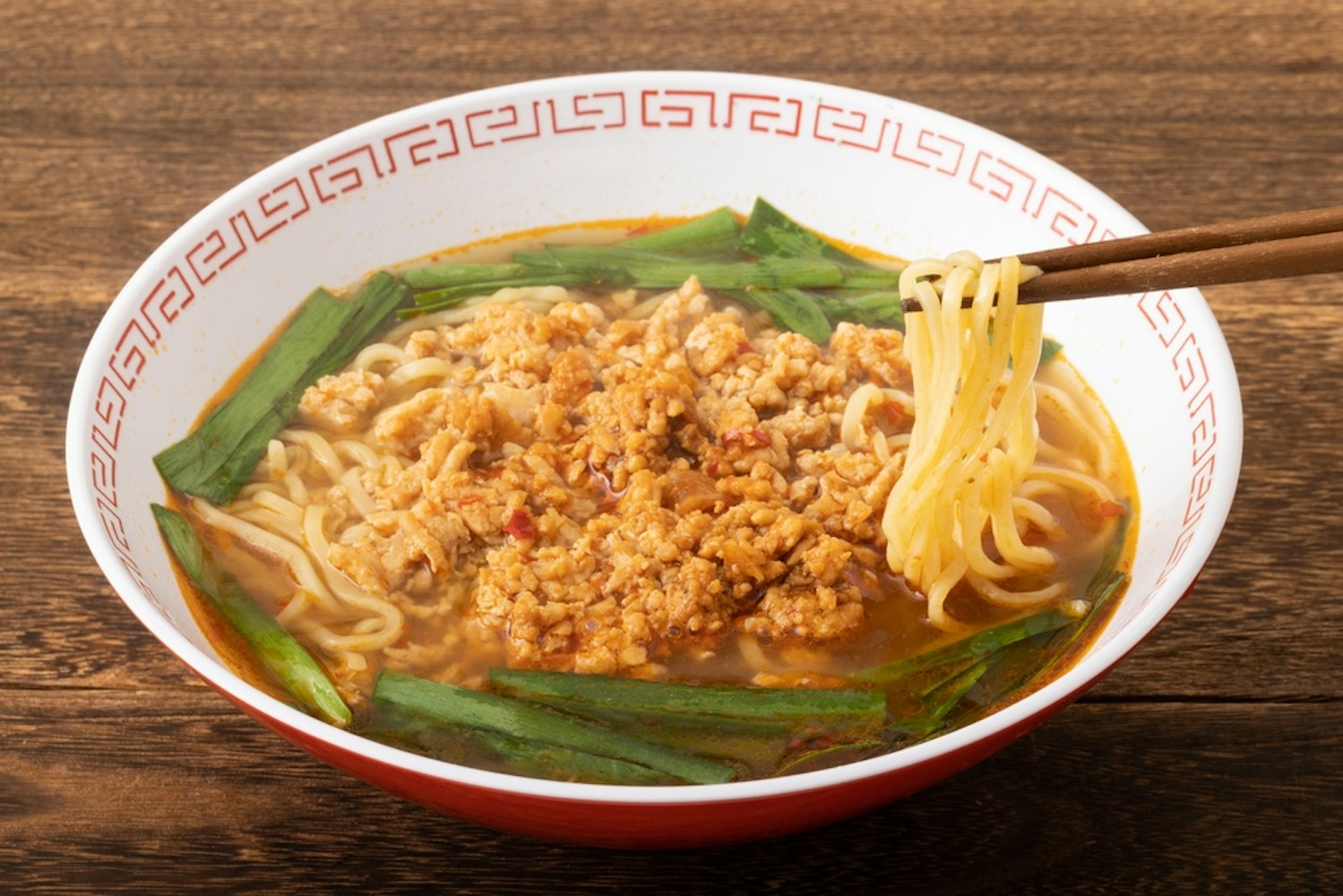
Don't let the name fool you; Taiwan Ramen is a Nagoya invention created by a Taiwanese chef in Nagoya. It features ground pork, spicy sauce, and green onions. Its fiery broth makes it a local favorite for those who like their food with a kick.
Many restaurants around Nagoya Station offer Taiwan Ramen on their menus. Each establishment has its take on the dish, varying the level of spiciness and additional toppings.
Whether you like your ramen slightly spicy or mouth-numbingly hot, there's a bowl of Taiwan Ramen in Nagoya.
Price: around 800 yen (8 US dollars)
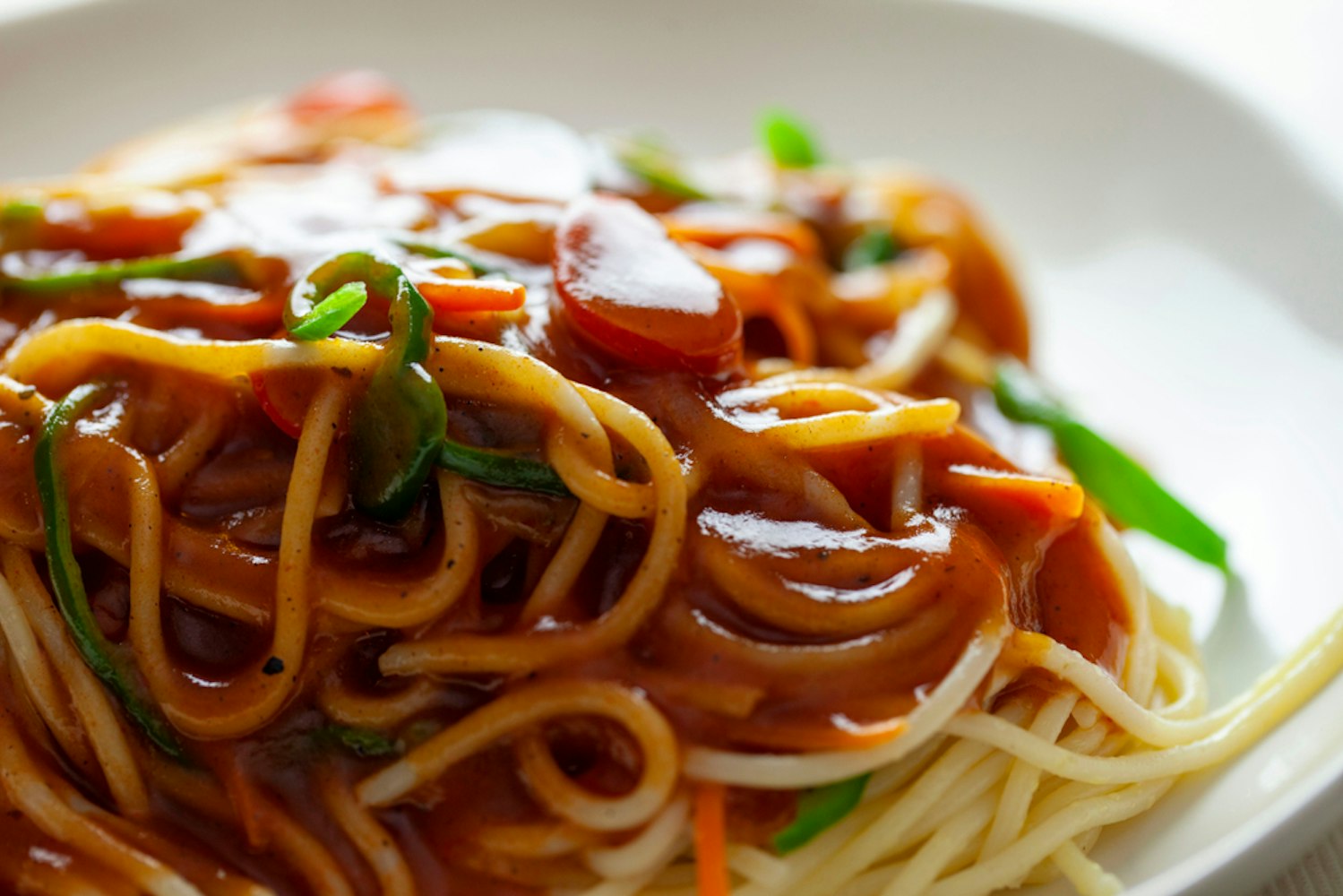
A Nagoya twist on Italian spaghetti, Ankake Spaghetti features a soy sauce-based gravy and an assortment of seafood or meat. It features a soy sauce-based gravy called "ankake," thickened with starch.
It combines flavors of the East and West seamlessly. The dish is so popular that restaurants specialize solely in Ankake Spaghetti. These establishments can easily be found around popular areas like Nagoya Station.
The Pasta: The spaghetti used in Ankake Spaghetti tends to be thicker than standard Italian spaghetti. It allows the pasta to hold the thick ankake sauce better, providing a more cohesive taste and texture.
The Sauce: The star of the dish is undoubtedly the ankake sauce. It starts with a soy sauce base and is often combined with dashi for added umami. The sauce is then thickened using cornstarch or potato starch, creating a rich gravy that coats the pasta perfectly.
Toppings: The toppings can vary but commonly include seafood like shrimp or squid, various meats such as pork or chicken, and vegetables like cabbage or bean sprouts. The choice of toppings adds a layer of complexity and flavor to the dish.
Price: around 900 yen (9 US dollars)

Curry Udon features udon noodles in a hot curry-flavored broth. It's a unique take on traditional udon and offers a spicy kick to the palate. Curry Udon is readily available in many restaurants throughout the city, particularly around Nagoya Station.
It's a popular choice for lunch and dinner, served in eateries ranging from small local joints to more upscale restaurants.
The Udon Noodles: Thick, chewy udon noodles are the main component of Curry Udon. These wheat flour noodles are unique to Japan and are prized for their texture and ability to soak up flavors.
The Broth: The broth is what gives Curry Udon its signature flavor. It is typically made with a savory curry base and combined with dashi, mirin, and soy sauce for added depth.
Meat or Protein: Curry Udon is commonly garnished with thinly sliced beef or pork, although it can also be enjoyed with chicken, shrimp, or tofu as a vegetarian alternative.
Vegetables: Typically, vegetables such as onions, carrots, and potatoes are added to the broth for a hearty and filling dish.
Toppings: Additional toppings can include an egg, green onion, or cheese for added richness and flavor.
Price: around 800 yen (8 US dollars)
The culinary landscape of Nagoya is as diverse as it is rich, offering a tempting array of flavors that will leave you craving for more. Immerse yourself in the delightful world of Nagoya's cuisine, from the delectable miso katsu, where tender pork cutlets are coated in a savory miso sauce, to the unique twists on udon noodles that will satisfy even the most discerning palate.
As you explore the city's vibrant food scene, indulge in the irresistible shrimp rice crackers, a delightful combination of crispy rice crackers and succulent shrimp that make for the perfect snack. For a truly indulgent experience, treat yourself to the deep-fried shrimp tempura, where the delicate sweetness of the shrimp is enveloped in a light and crispy batter.
Embark on a gastronomic journey where every bite is a discovery, and every meal is an adventure. Take advantage of the opportunity to savor the flavors of Nagoya and create unforgettable culinary memories during your next visit.
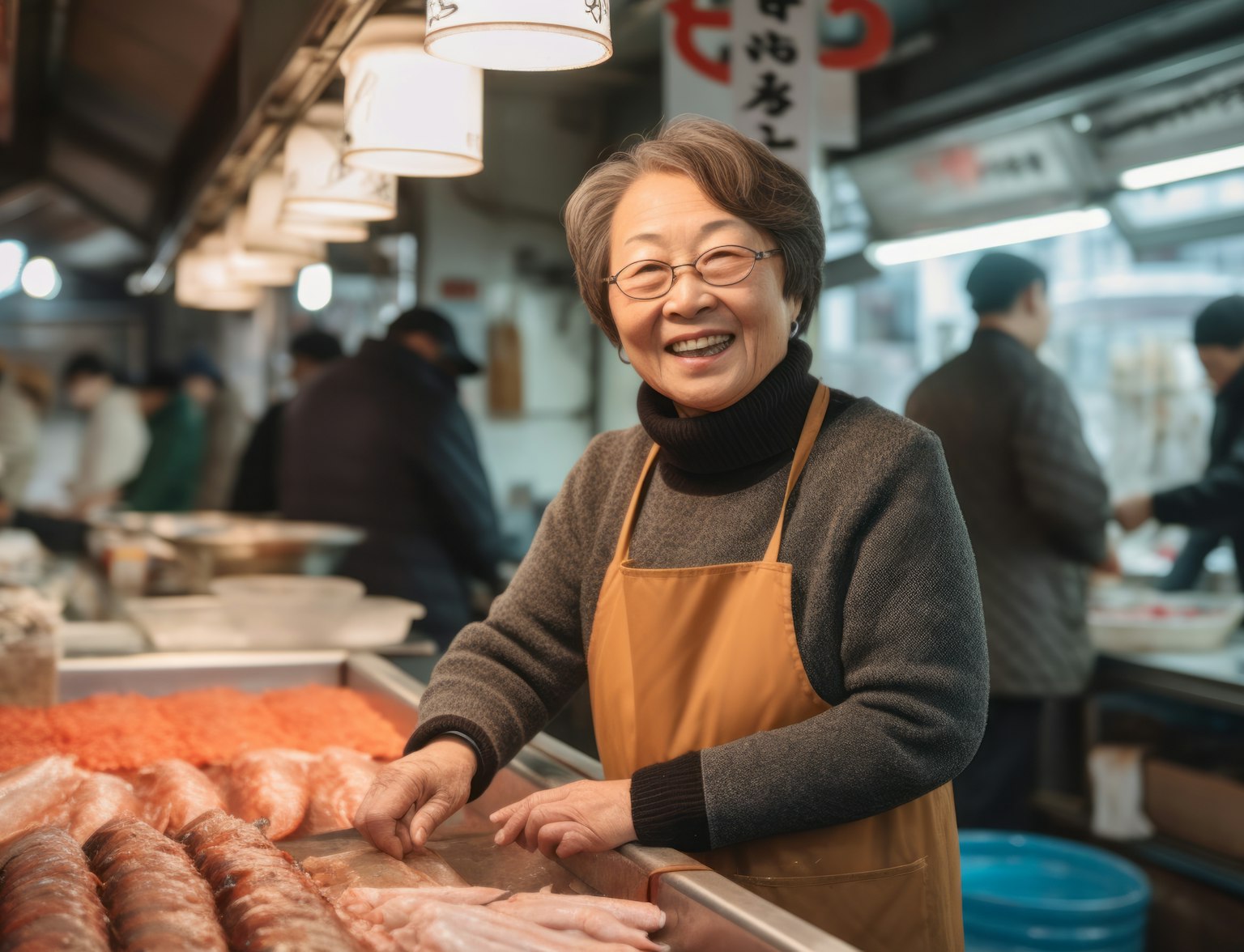
Experience a Nagoya fish market like never before with this tour.



